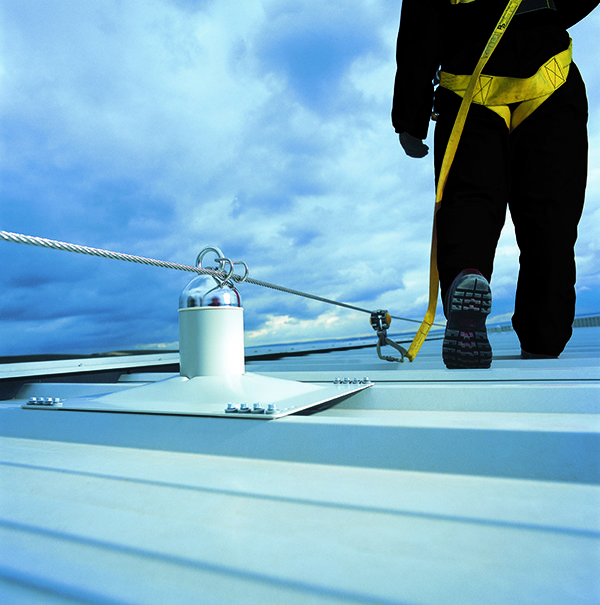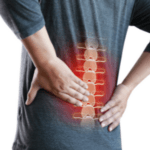 For those working in the health and safety industry, there is an unending challenge to consistently be able to protect people and keep them safe while they work. This can be a tall order and, in the context of working at height, one that requires health and safety managers to always be on the look-out for new products and systems that will truly do their job – send people home safely at the end of each day.
For those working in the health and safety industry, there is an unending challenge to consistently be able to protect people and keep them safe while they work. This can be a tall order and, in the context of working at height, one that requires health and safety managers to always be on the look-out for new products and systems that will truly do their job – send people home safely at the end of each day.
For Latchways, product testing is the fundamental issue of concern when it comes to fall protection, and meeting standards is the central matter that must be considered. Jonathan Seymour, Latchways Head of Sales (UK and Ireland) explains the latest test methods and looks at why it’s so important to demand the continuous raising of standards.
All of us working in fall protection have the same goal – to ensure the safety of the end user. I speak to many people every day – from health and safety professionals to facilities managers – who all face the same struggles … ‘which products and systems should I specify that will really get the job done?’
My answer is always the same – choose the products that have been most thoroughly and robustly tested. It’s as simple as that … but of course there are many regulations, directives and standards out there and it can become confusing knowing which to pay attention too.
EN 795:2012 is a key Standard when it comes to fall protection. It relates to the testing of anchor devices enabling people to work safely at height, and is therefore the minimum requirement that protects those people and keeps them safe. It seems obvious that this Standard should be fundamental to any manufacturer of fall protection devices, and indeed those specifying and using the equipment, but unfortunately, this isn’t always the case.
EN 795:1996 first came into play in 1996 – relating to the testing of personal fall protection equipment for a single user. It was updated three years ago to EN 795:2012 – a revised Standard giving far greater detail on testing and increased onus on the testing method itself – as well as being supported by a technical specification addressing testing for multiple users (CEN TS 16415). Overall, it provides a much more robust set of testing requirements.
However, EN 795:2012 brought with it a certain number of new requirements, the most important of these being the need to test all anchor devices for fall arrest capability, even if the intended purpose of a device was only for fall restraint – something EN 795:1996 did not require. In fact, the 2012 update also closed the loop on any misunderstanding of the testing of fall restraint devices, as the 1996 revision technically only covered “arrest” devices in the first place. The 2012 update allows for no misinterpretation of the Standard – all anchor devices must now be tested for fall arrest capability, regardless.
This is undoubtedly good news – however there is still a certain amount of freedom existing around the 2012 update – it is not yet a legal requirement for manufacturers to test to this Standard, meaning the most thoroughly tested products and systems are not being chosen. In turn, although the 2012 standard has been in place for over two years, there are new fall protection systems being specified and installed today with products still only able to demonstrate compliance to EN 795:1996.
In an age where we are seeing increasing numbers of people working at huge heights – from roofs to electricity towers to cranes and much more – it has never been so important that people are being protected by the absolute best fall protection systems. At Latchways we want to get the message out there that the entire health and safety industry should be demanding products that are tested to EN 795:2012 – this is the only way to embrace the raising of standards and truly ensure the safety of the end user is put first.
 Jonathan Seymour has been with Latchways for 15 years, and heads up its sales team for the UK and Ireland. His passion is good engineering, and he feels this is what makes Latchways such a great company – a progressive business built around true engineering.
Jonathan Seymour has been with Latchways for 15 years, and heads up its sales team for the UK and Ireland. His passion is good engineering, and he feels this is what makes Latchways such a great company – a progressive business built around true engineering.
Jonathan believes one of Latchways biggest successes has been keeping its network of installers intact during the last few years – working together with them through the difficult times has strengthened relationships and grown the company’s installer base.
When asked why customers should choose Latchways, Jonathan says: “That’s easy. Our business is based around excellent engineering, strong product testing and a commitment to exceeding standards. Good engineering means good design and that, ultimately, makes people’s lives safer – and at its core that is what fall protection is all about.”
Approaches to managing the risks associated Musculoskeletal disorders
In this episode of the Safety & Health Podcast, we hear from Matt Birtles, Principal Ergonomics Consultant at HSE’s Science and Research Centre, about the different approaches to managing the risks associated with Musculoskeletal disorders.
Matt, an ergonomics and human factors expert, shares his thoughts on why MSDs are important, the various prevalent rates across the UK, what you can do within your own organisation and the Risk Management process surrounding MSD’s.



